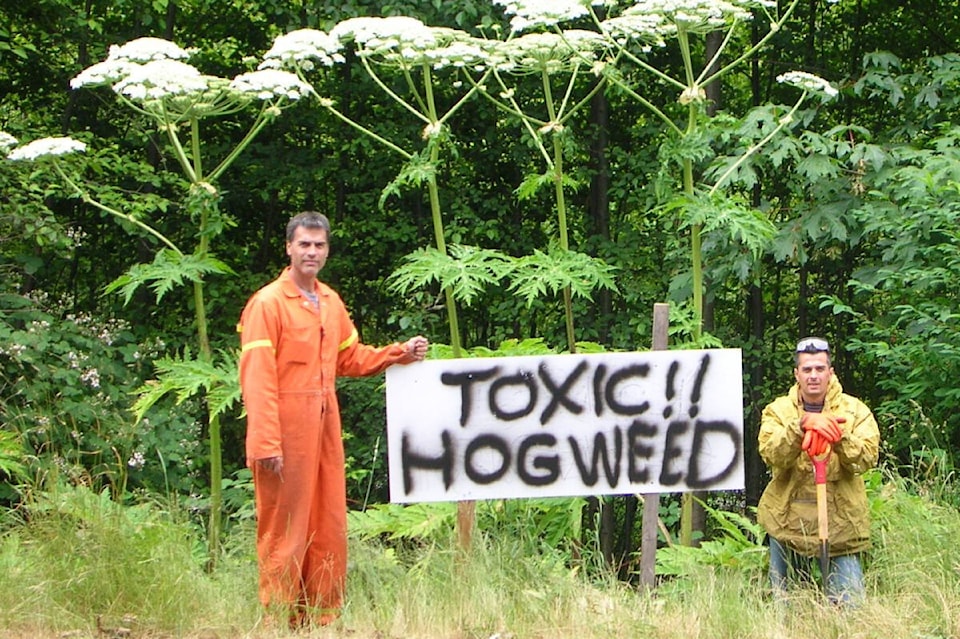By Dr. Catherine Tarasoff
You’ve likely found yourself scratching your head, looking at an enormous plant while wondering “Is this the giant hogweed I’ve heard so much about”?
Today’s article is focused on two plants that are often confused for one another: cow parsnip (native) and giant hogweed (exotic/invasive).
Both species have a large umbrella-shaped “bouquet” of small, white flowers. Both plants are large, but giant hogweed is “super-sized,” growing up to four metres tall; cow parsnip taps out at a “mere” two metres.
The key defining difference between the two plant species is in their leaf shape. Giant hogweed has enormous leaves (up to 1.5 metres across) that are deeply incised with pointy tips, while cow parsnip leaves are half the size and have more rounded leaf tips.
The stems are also slightly different. The stem of giant hogweed also has purple spots on it, while cow parsnip stems may have purple colouring, but not defined blotches.
When examining these super-sized suspects, I caution you to do so from a distance or with proper personal protective equipment. Giant hogweed is a hazardous, federally listed noxious weed, and its sap contains phototoxic chemicals.
If the sap encounters your skin and then is exposed to sunlight, it can cause severe skin irritation including painful, burning blisters and long-lasting scars. If the plant touches your skin, immediately wash the area with soap and water and protect it from sunlight for 48 hours.
Native cow parsnip is far less toxic, but it can still cause a rash or burn. Use caution around either plant.
Both species inhabit moist meadows, forest edges, and riparian zones. Fortunately, giant hogweed is not yet known to occur within the Thompson-Nicola Regional District. While it is possible for it to establish itself in the region, the super-sized plant you are likely to encounter is our native cow parsnip.
Help keep our region free of invasive plants by being “Plant-Wise” and choosing non-invasive species for your property. If you suspect that you have seen giant hogweed in our region, quickly report it to the Regional District.
Dr. Catherine Tarasoff is the Education and Outreach Coordinator for the Thompson-Nicola Invasive Plant Management Committee (on Facebook @TNIPMC). This season, articles are dedicated to identifying native plants that are commonly mistaken for invasive plants. The series will provide tools and tips for telling the difference between invasive species and native look-alikes in our region. Look for more resources at www.tnrd.ca.
READ MORE: Nature’s doppelgangers: invasive species versus their native counterparts
READ MORE: Show baby’s breath no love this Valentine’s Day, invasive species group warns
READ MORE: Up to the gills in goldfish: Large invasive fish a problem in B.C. waters: expert
